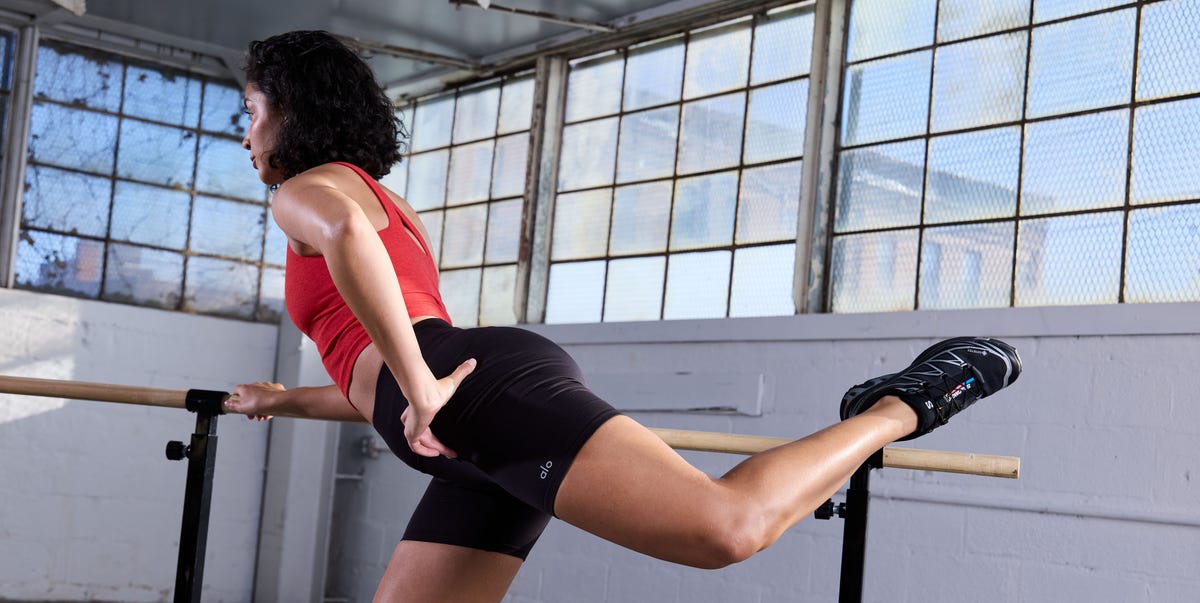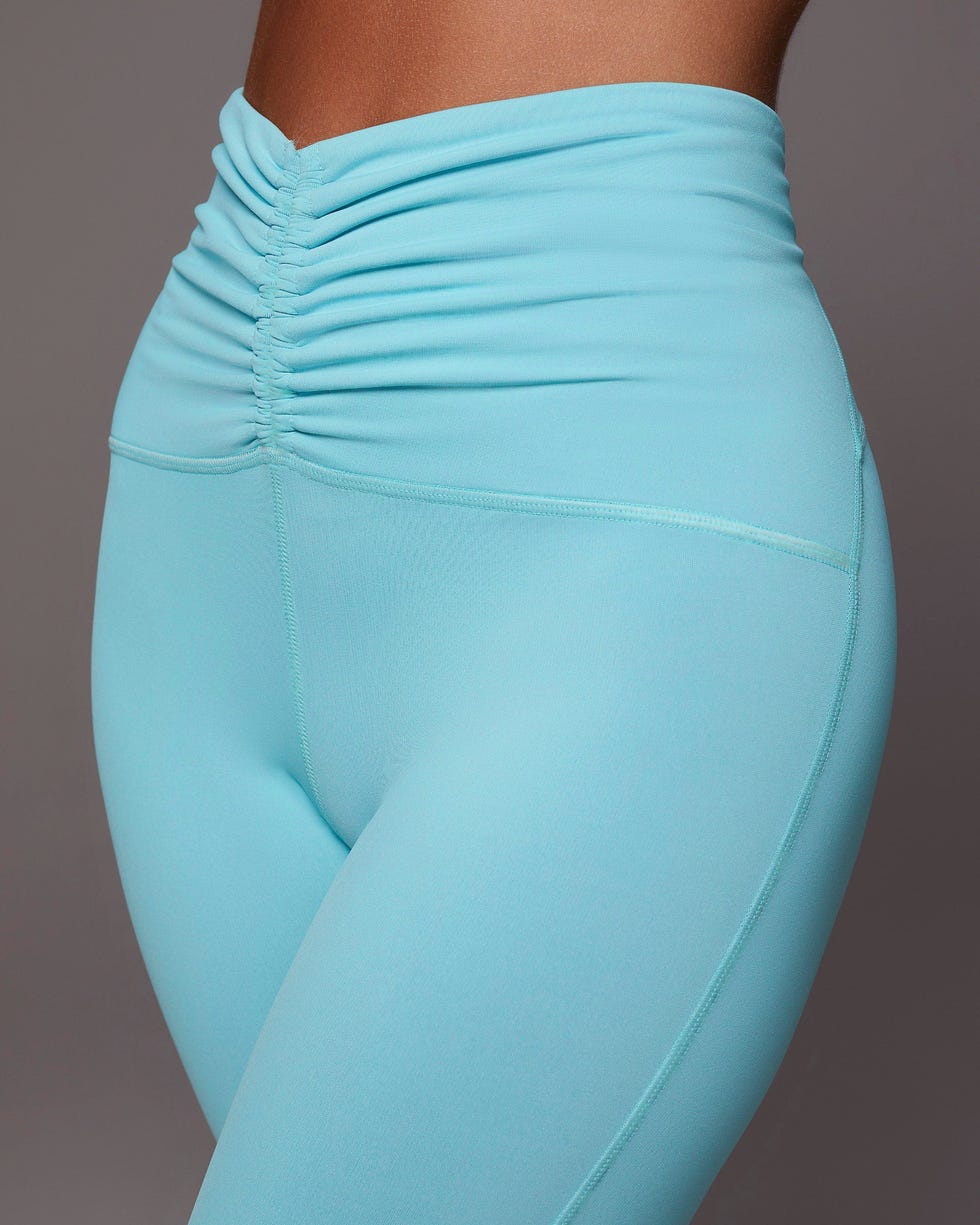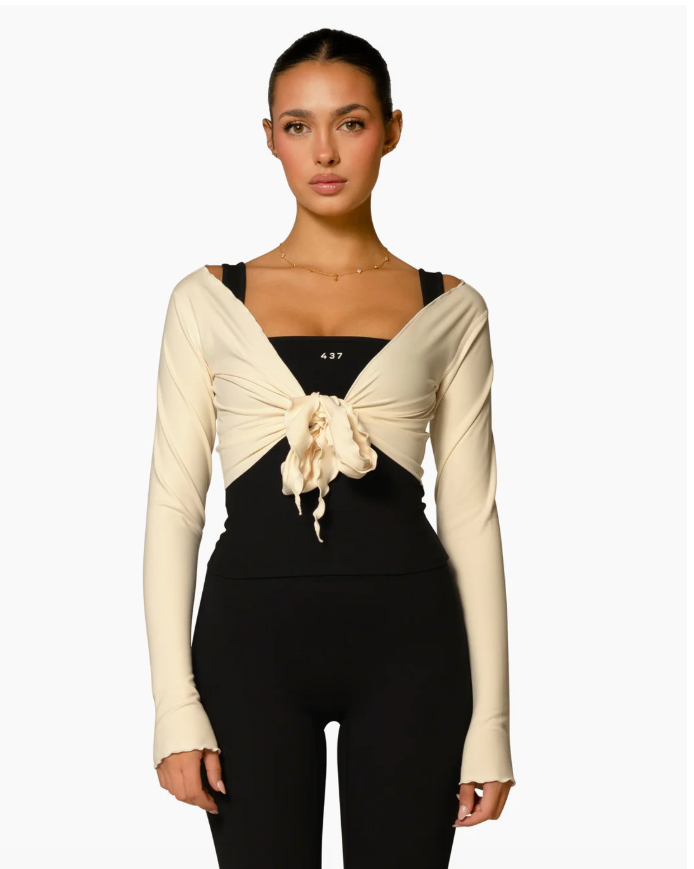If you’ve got the barre bug lately, join the club. This low-impact, beginner-friendly workout is a great way to build strength, improve endurance, and increase your flexibility and mobility. And if you’re looking for a group fitness class to test out, I can’t recommend barre workouts enough.
In just 45 to 60 minutes, you’ll pulse, squat, and plank your way through a full-body workout, all set to fun music. But, as with any other class, it might take a sec before you fully have a handle on what to do, and how to make the most out of it. “I usually say it takes about three classes to really understand what is going on in a barre workout—what the postures are, what the instructor is talking about,” says Lisa Pantaleo, owner and instructor at barre3 in Long Island City, NY.
Whether you’re a diehard barre girlie or a beginner curious about the pilates and ballet-inspired workout, there are plenty of tips and tricks you can keep in your back pocket to get just that much more out of a class. So, here they are—straight from instructors who teach it.
Meet the experts: Lisa Pantaleo is the owner of barre3 in Long Island City, NY, where she has been teaching barre for six years. Rachelle Reed, PhD, is an exercise scientist and Pure Barre instructor based in Athens, GA. Kara Liotta, CPT, is the co-founder of KKSWEAT, a barre and HIIT studio in New York City.
Tips For Making The Most Of Your Next Barre Class
1. Check in with your instructor.
Your number one resource in any barre class is your instructor. Before class, it’s a good idea to let them know it’s your first time doing barre, if you have any injuries, and if there’s any moves you struggle with. (I once off-handedly told my instructor that I feel like I haven’t been sufficiently engaging my core in class, and let’s just say she made sure to tweak my form accordingly, for example.)
Even if it’s just to compliment their playlist, it’s always a good idea to make a 1:1 connection with your instructor after class, too. If there were any moves you didn’t quite get the hang of or something that didn’t feel right, ask for further instructions or modifications for next time. “Don’t be afraid to ask your instructor if you need clarity about anything,” says Rachelle Reed, PhD, an exercise scientist and Pure Barre instructor. “Chances are they’re going to be happy to spend a couple of minutes with you, show you how to fix any improper form, or even provide a modification as needed to help you feel really good about doing that position better next time you come in.” And, BTW, modifications are everything in barre. They help make moves more accessible for your body, to work best for you, depending on how your feeling that day, says Pantaleo.
2. Use the mirror to check your form.
“With many workouts, but barre in particular, form is so mission-critical,” says Kara Liotta, CPT, the co-founder of KKSweat. In addition to paying close attention to the cues that come from your instructor, there’s one other main tool for keeping your form in check: the mirror.
Especially if you’re new, it might be tempting to set up in a spot far from the front of class (guilty), but giving yourself a good view can help you get the most out of the workout and make sure you’re in the proper alignment, says Pantaelo. So, don’t be afraid to use it.
“That mirror is literally there so that you can look at your own body and get that visual awareness of if you’re in good form,” says Reed.
3. Grab multiple sets of weights.
When you get to a barre class, your instructor will tell you what equipment to grab from the piles of resistance bands, sliders, balls, and more. In most classes, you’ll likely be asked to grab a set of light weights (anywhere from one to eight pounds). Deciding how much weight to grab can be tricky, which is why it’s best to give yourself options, says Pantaleo.
Some moves, like lower-body exercises such as squats and glute bridges, can handle heavier loads, while others, like upper-body moves including overhead presses and triceps extensions, require less. With a few weight options, you can challenge yourself appropriately for each exercise. Plus, since barre is high-rep, fatigue is inevitable—keeping a lighter set nearby lets you dial down the intensity when you start to burn out, without skipping resistance altogether.
4. Be strategic with your breaks.
Barre is all about endurance and finding your edge, so it’s totally normal to need to take a break. In fact, it’s to be expected. “You shouldn’t be able to hold every single thing in a barre class for the entire duration of time—that’s not the goal,” says Liotta.
But, how do you know when it’s time to take a break or keep pushing? When your form starts to suffer, it’s best to take a moment to rest, says Liotta. Come out of the position, shake your legs out, and in about 10 seconds or less, hop back into it.
If your form is still on point but your shaking or feel your muscles burning, try to keep pushing (easier said than done, I know). In the spicy moments, mindset is everything, says Pantaleo. “Try not to disconnect with how you’re feeling and just wish away the discomfort,” she says. “Instead, take the time to tune inwards and try to focus on the sensation. Ask ‘What am I feeling in my body?’ and breathe through it.” Even though the *many* pulses might feel like they’re going on forever, keep in mind that it’s a temporary moment.
5. Focus on slow and controlled pulses.
One thing you’re definitely going to do in a barre class is pulse. Also called “inches,” pulses are tiny, controlled muscle contractions typically done at the end-range of motion in a position. You might do pulses in a glute bridge, in a squat, or in a lunge.
It seems simple, but not all pulses are created equal, says Reed. Your pulses shouldn’t be “bouncy” or using any momentum (this would be a good thing to check out in the mirror), she says. A pulse is a short-range muscle contraction, so it should be precise and controlled. The best cue for making sure your pulses are on point is to really think of the movement as coming from the joints, says Reed.
6. Fuel before and after class.
Having something to eat and drink before class is always a good idea, says Reed. “In order to get a really good workout and give it your all for however long the class is, you do need to be properly fueled up and hydrated in order to perform optimally,” she says.
You don’t have to do anything crazy, but ideally, this means eating something within two hours of a class that has carbs and protein and drinking water on your way to class.
7. Do a warm-up before the warm-up.
Warm-ups are baked into a barre class, so you technically don’t need to do anything before your instructor kicks things off. But, especially if you’re feeling tight or sore before class, a little solo stretching time can help you get the most out of your session.
If you’re looking for stretches to do before class, Pantaleo recommends a butterfly stretch to get your hips feeling mobile, quad stretches at the bar to get yourself prepped for any lunges, a figure-4 at the bar to warm up your glutes, and shoulder circles for some upper body mobility.
8. Wear the right gear.
There’s not a whole lot of gear needed for barre. Mostly, you’ll want to wear athletic clothing you feel comfortable moving in (most people opt for compression shorts or leggings and a tank or t-shirt), and then there’s one other optional—or critical, depending on who you ask—accessory: grippy socks. I’m in the pro-socks camp because they help me feel stable while providing a little barrier between me and the ground, but all the instructors stress that it’s totally up to personal preference. And, if you find that socks aren’t serving you in a particular move, never be afraid to chuck them off for certain parts of the workout, says Pantaleo. It’s your class—do what you need to do.
What I Wear To Barre Class
Olivia Luppino is an editorial assistant at Women’s Health. She spends most of her time interviewing expert sources about the latest fitness trends, nutrition tips, and practical advice for living a healthier life. Olivia previously wrote for New York Magazine’s The Cut, PS (formerly POPSUGAR), and Salon, where she also did on-camera interviews with celebrity guests. She’s currently training for her first half marathon, inspired by her many colleagues at WH who have run one.
Read the full article here







